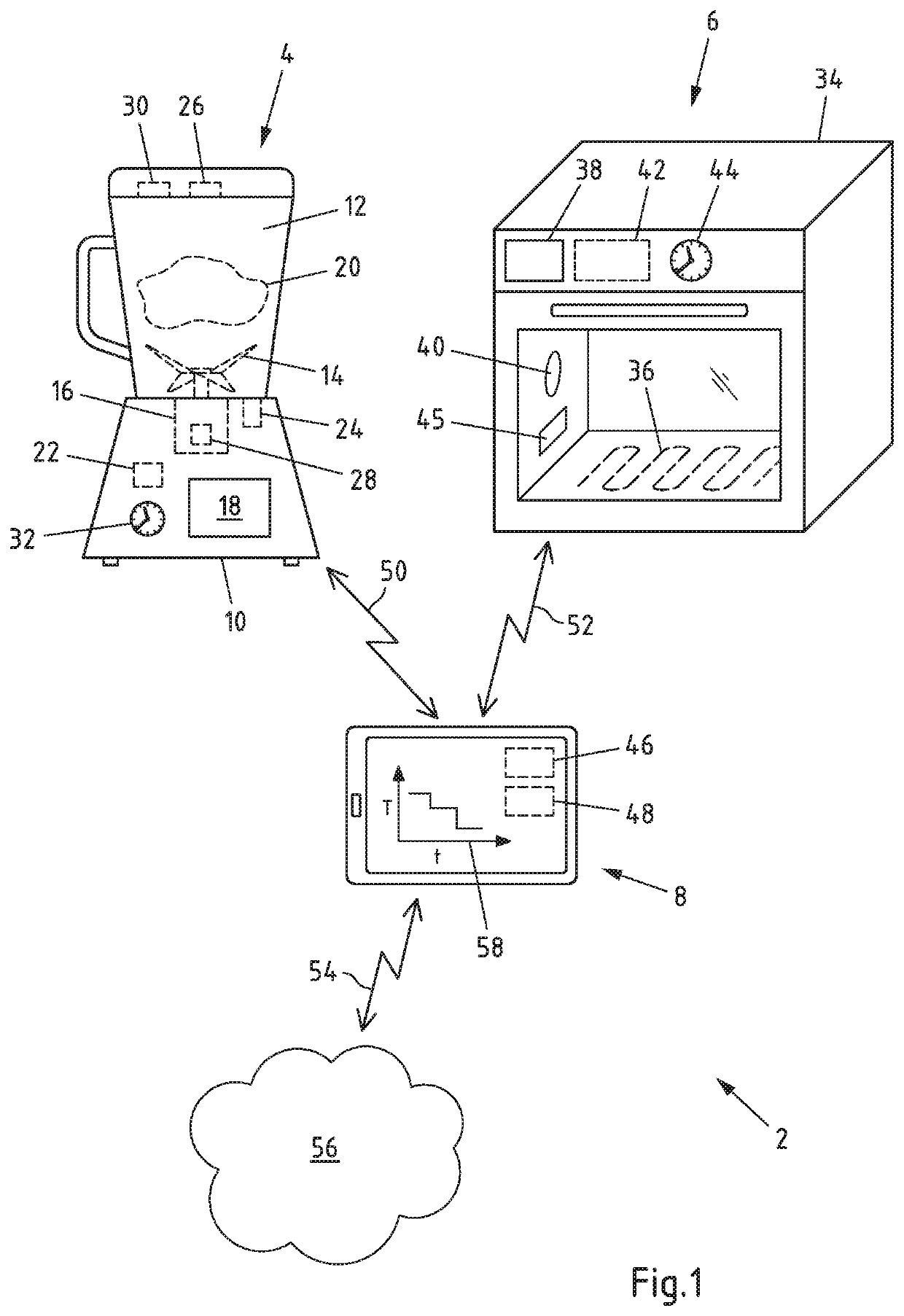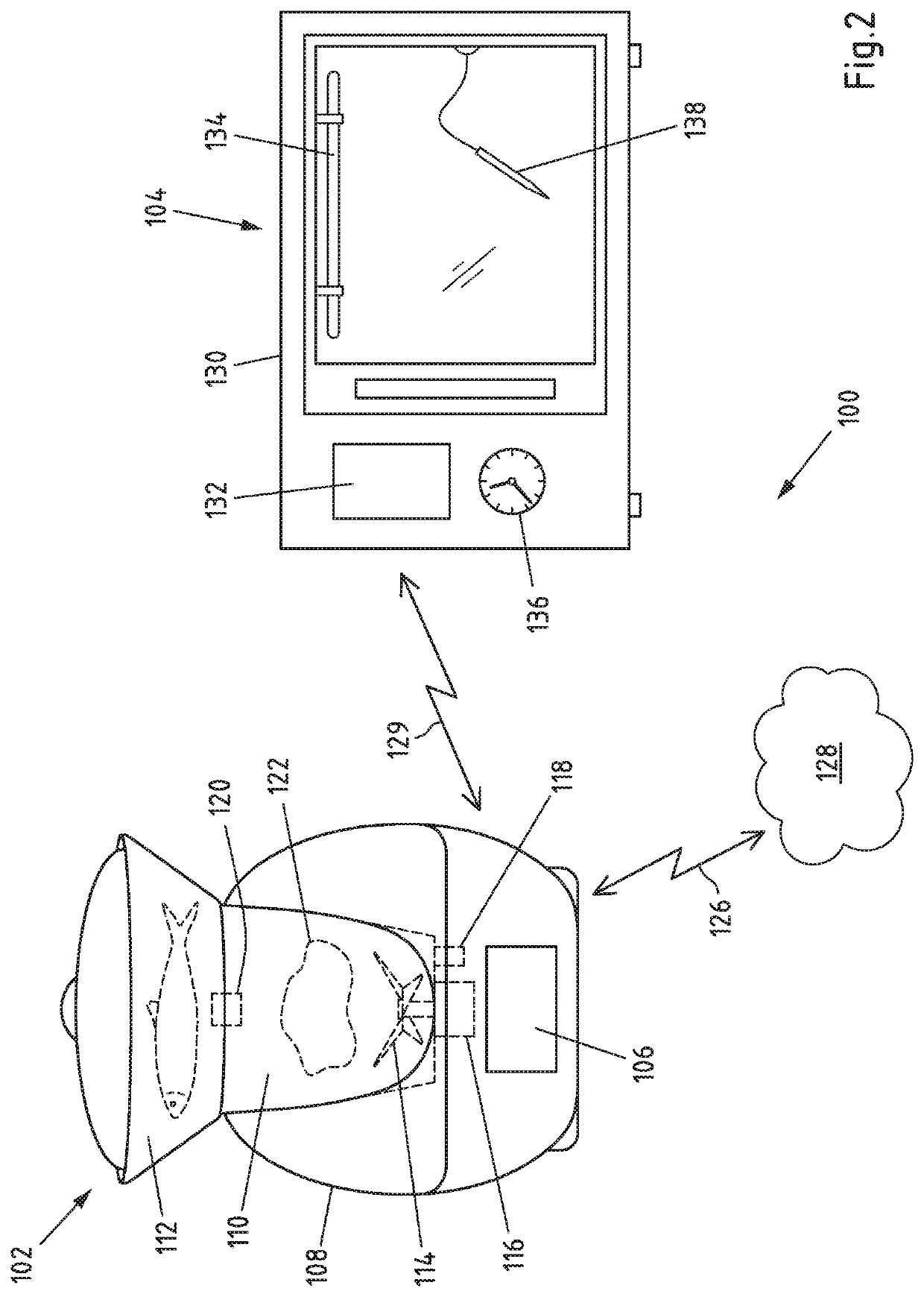System for Preparation of Food and Method for Controlling a Kitchen Appliance
- Summary
- Abstract
- Description
- Claims
- Application Information
AI Technical Summary
Benefits of technology
Problems solved by technology
Method used
Image
Examples
Embodiment Construction
[0074]FIG. 1 shows a first example of a system 2 for the preparation of food in a schematic representation. The system has a cook mixer 4, a kitchen appliance 6 and a control unit 8.
[0075]The cook mixer 4 has a housing 10, a receiving volume 12, a comminuting and mixing device 14, a drive system 16 and a control unit 18. A foodstuff 20 in the form of bread dough to be prepared is arranged in the receiving volume 12. Mixing device 14 is configured to mix ingredients of food 20 together, and control unit 18 is configured to control mixing device 14.
[0076]Furthermore, the cook mixer 4 has several detection means 22, 24, 26, 28, 30, 32, which are each designed as GPS sensor 22, weighing module 24, thermometer 26, viscosity sensor 28, humidity sensor 30 and stopwatch 32, respectively. The GPS sensor 22 and the stopwatch 32 are arranged in the housing 10 of the cook mixer 4. The thermometer 26 and the humidity sensor 30 are partially arranged in the receiving volume 12 to measure the temp...
PUM
 Login to View More
Login to View More Abstract
Description
Claims
Application Information
 Login to View More
Login to View More - R&D
- Intellectual Property
- Life Sciences
- Materials
- Tech Scout
- Unparalleled Data Quality
- Higher Quality Content
- 60% Fewer Hallucinations
Browse by: Latest US Patents, China's latest patents, Technical Efficacy Thesaurus, Application Domain, Technology Topic, Popular Technical Reports.
© 2025 PatSnap. All rights reserved.Legal|Privacy policy|Modern Slavery Act Transparency Statement|Sitemap|About US| Contact US: help@patsnap.com


